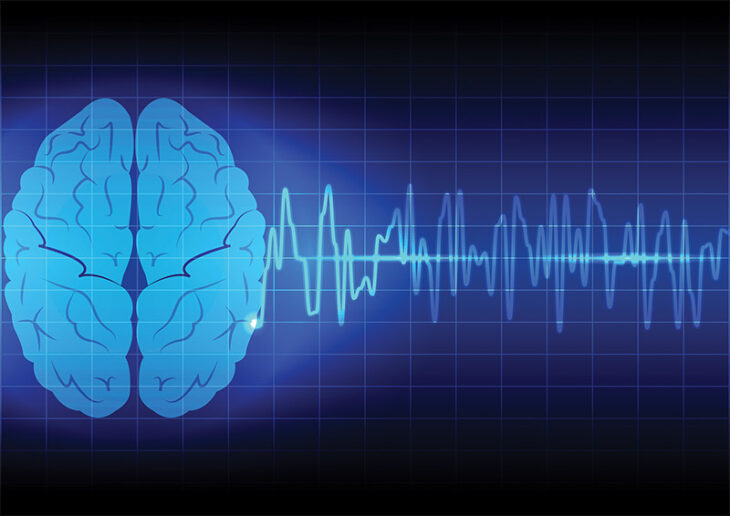Our brains work by a carefully orchestrated system of neuronal communication. Neurotransmitters, such as dopamine, serotonin, and cannabinoids, regulate how these communications occur. Seizures happen when there’s a malfunction of this system, causing a lot of neurons to fire — a cascade of sudden, excessive and uncontrolled electrical signals.
Everyone has a potential to have a seizure, based on an individual’s “seizure threshold.” Even someone who has never had such an episode can have one if he or she is subjected to enough stress. These situations include insufficient sleep, oxygen or glucose; withdrawal from certain medications or alcohol; or overloading stimuli, such as flashing lights or stimulant medications. If a person has two or more seizures (except for febrile), he or she is labeled as having epilepsy.
There are several different types of seizures. In the classic grand mal seizure, a disorderly cascade of neuronal firing traverses the whole surface of the brain’s cortex. This outburst of signals results in muscle contractions throughout the body, causing the limbs and body to jerk around. Following a grand mal seizure, most sufferers lose consciousness for a short time before waking up confused, disoriented and sore.
If you witness someone having a grand mal seizure, make sure he or she is safe, lying on the floor and not hitting anything sharp or hard. Never put anything in a person’s mouth during a seizure. The tongue can’t be swallowed; that’s a myth. Biting of the tongue may happen, but the tongue heals quickly.
In “focal” seizures, only one part of the body is affected, such as an arm or facial muscle, or there may be a sense of something crawling on the skin. These can have peculiar results, such as hallucinations (including sights, smells and tastes) or a vivid déjà vu, such as recalled memories or emotions.
An absence seizure causes someone to blank out or stare into space for a few seconds. These also are called petit mal seizures. Absence seizures are most common in children and typically don’t cause any long-term problems. These types of seizures often are set off by a period of hyperventilation.
Between the ages of 18 months and five years, some children may have febrile seizures. It’s believed these occur when a child’s fever rises very quickly. While scary, they’re benign, and the child will seem perfectly normal a few minutes after the seizure is over. If he or she appears fine, the child does not need to be brought to the hospital. On the other hand, certain dangerous infections can cause seizures, so if the child does not appear normal afterward, take him or her to the emergency room for evaluation.
Most seizures that develop in childhood are genetically linked, and there’s a family history. However, seizures that develop in older adults usually are caused by brain damage from trauma, a stroke or a tumor. Seizures can be diagnosed by a test called an EEG, a brain wave study that must be read by a specialist, usually with the addition of a CAT scan.
Many good medications are available for slowing or preventing seizures. If you know someone who has seizures, have him or her check with a neurologist or family doctor for care. While the seizure itself may not cause brain damage, falling or drowning during one can be dire.



